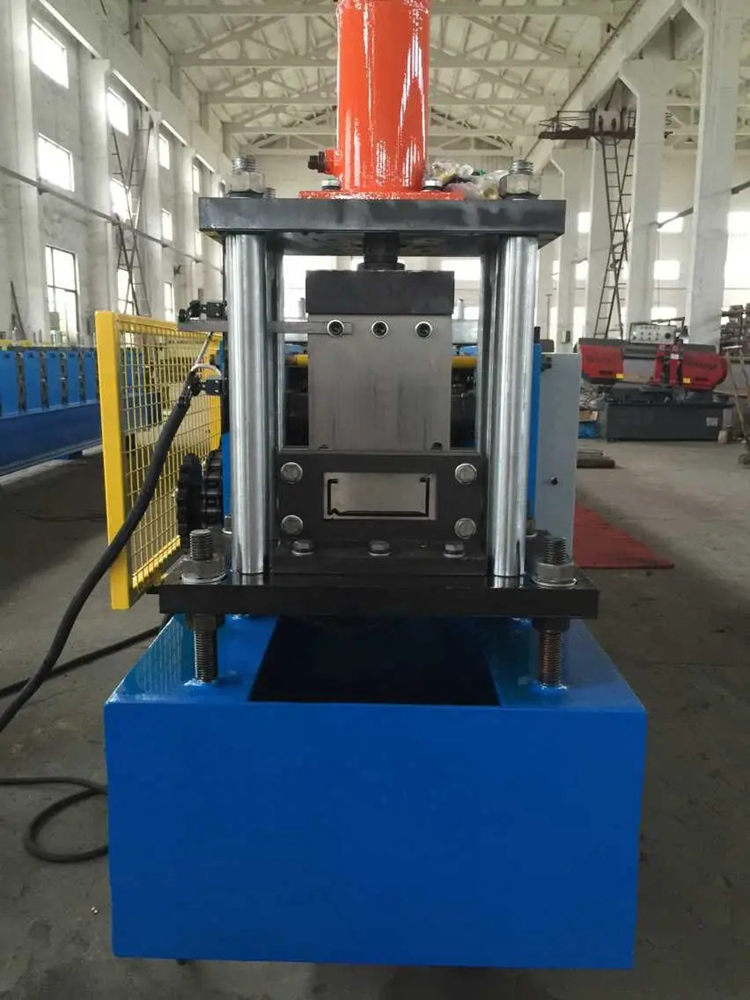
The Importance of Guardrail Block Cold Bending Machines
In the realm of modern infrastructure, safety and efficiency play pivotal roles. One innovative solution that has emerged to enhance roadway safety is the guardrail block cold bending machine. This machinery is essential for the construction and installation of guardrails, which serve as vital components in maintaining road safety by preventing vehicles from veering off the road and minimizing the impact during accidents.
Understanding Guardrail Blocks
Guardrails are designed to absorb and redirect the energy of a vehicle during a collision. They are typically made of strong materials like steel, which can withstand significant forces. Guardrail blocks, specifically, act as the support structures that hold the guardrail system in place. The design and quality of these blocks directly influence the overall effectiveness of the guardrail system. Therefore, proper manufacturing techniques can significantly impact road safety.
The Function of Cold Bending Machines
A guardrail block cold bending machine is specifically engineered to bend steel and other materials at room temperature without the application of heat. This process is essential for crafting guardrails that maintain their structural integrity while also being adaptable to various designs and specifications. Cold bending is preferred in many scenarios due to its ability to produce precise bends without compromising the metal’s strength.
The cold bending process involves applying force to the metal, allowing it to change its shape without altering its physical properties. This method reduces the risk of material fatigue and ensures that the guardrail retains its durability over time. By utilizing a cold bending machine, manufacturers can create guardrails that are not only effective but also cost-efficient and environmentally friendly, as the process consumes less energy compared to hot bending.
Advantages of Using Guardrail Block Cold Bending Machines

1. Precision and Consistency Cold bending machines provide outstanding precision in every bend, ensuring that each guardrail block meets the exact specifications required for installation. This consistency is vital for uniformity across an entire guardrail system.
2. Cost-Effectiveness By minimizing waste and optimizing material usage, cold bending machines can reduce manufacturing costs. This economic advantage allows companies to offer competitive pricing while maintaining quality.
3. Rapid Production These machines are designed for high-speed operations, enabling manufacturers to produce large volumes of guardrail blocks in a shorter time frame. This efficiency is crucial in meeting the growing demands of infrastructure projects.
4. Sustainability The cold bending process is less energy-intensive than traditional methods, making it a more sustainable choice in manufacturing guardrail systems. By using this technology, companies can reduce their carbon footprint while producing effective safety solutions.
5. Versatility Cold bending machines can accommodate various designs and specifications, allowing manufacturers to cater to different project requirements. This flexibility is essential in a field where road conditions and safety standards can vary widely.
Conclusion
In conclusion, guardrail block cold bending machines represent a significant advancement in the manufacturing of guardrail systems. Their ability to create precise, durable, and cost-effective products is invaluable in enhancing road safety. As urbanization continues to rise and road traffic becomes increasingly hazardous, the role of these machines in producing reliable guardrail blocks will be crucial in safeguarding lives on our highways. Investing in advanced manufacturing technologies like cold bending not only improves infrastructural safety but also promotes sustainability, making it a win-win situation for manufacturers and the communities they serve.